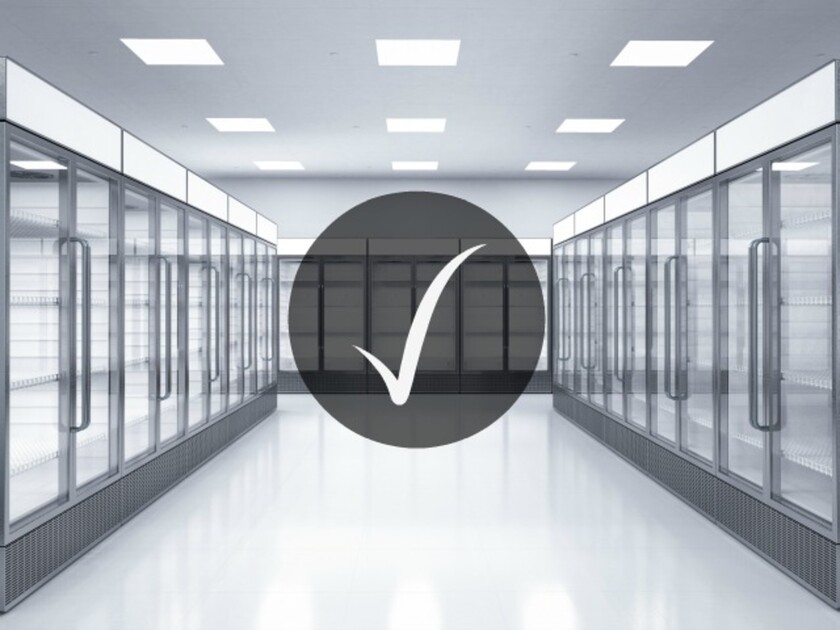Refrigeration systems are critical to the operations of many types of facilities — such as supermarkets, warehouses and restaurants. However, the operating costs for these systems can be substantial. These preventive maintenance measures will keep coolers or freezers operating at peak performance, providing the kind of savings you can really warm up to.
- Check and replace door gaskets. Keep them clean and pliable. Adjust the door sweep gasket if required. Replace door gaskets every three years. Use an infrared thermography camera to check for air infiltration.
- Adjust door hinges and lubricate them annually.
- Check automatic door closers. They should firmly close all walk-in doors.
- Clean the evaporator and condenser coils. Keep air paths around the coils clear. Don't let trash accumulate near the walk-in coolers. Make sure evaporator drain lines are open and condensate is draining properly.
- Check the refrigerant charge. Overcharged units are just as bad as undercharged units. Check the refrigerant line sight glass (if applicable) and look for frothing and bubbles, which are indicators of either a shortage of refrigerant or contamination.
- Benchmark unit daily energy consumption (kWh/day) using the unit's Total Display Area (TDA). TDA is the sum of the projected area(s) for visible product expressed in square feet. Maximum daily energy consumption (MDEC) benchmarks have been established by the U.S. Department of Energy. See Commercial Refrigeration Equipment for more information.
- Monitor refrigeration temperatures daily. Check thermostat settings against actual temperature. Temperature fluctuations may indicate that something isn't working properly.
- Look and listen for excessive or unusual vibration in fan blades. Damaged or unbalanced fan blades are less energy efficient. Worn bearings can lead to coil damage from blade impact.
- Check for proper operation of defrost cycles. Look for excessive ice buildup on evaporators. Evaporator surfaces should have relatively uniform coil frost patterns.
- Verify operation of crankcase heater. Measure amperage draw using a clamp-on meter.
Refrigeration commissioning is a great way to uncover design problems or operational and maintenance issues affecting performance. For more information, see the Refrigeration Commissioning Guide for Commercial and Industrial Systems available from ASHRAE.


